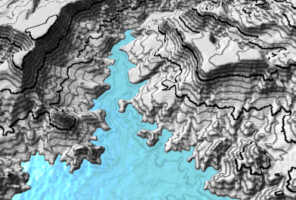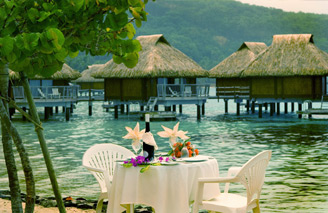UNDER CONSTRUCTION.
TELEGRAM the author for suggestions and queries
Motto:English: "Continue Regardless"
Anthem:
French: "Continuéz sans se soucier"English: "National Anthem of the Oan Isles"
French: "Hymne National d'Ilês de Oa"
Capital CityLa Rochelle
Largest CityPort of the Rock
Population2010 ce. census: 120,480,346
Density: 179.43/km2
EthnicitiesWhite European: 34.67%
Black African: 25.33%
Indigenous Oan: 32.56%
Other: 7.44%
SDIHigh 8.48 ^
Major ReligionsChristianity: 90%
Islam: 2.26%
Buddhist: 2.4%
Animist: 2.12%
Other: 3.22%
ScriptLatin Script
GDP (ppp)3,680 trillion USD
GDP (nominal)
Per capita: 30,549.054 USD3,680,trillion USD
Income inequality
Per capita: 30,544.405 USDGini coefficient: 0.23 good down
CurrencyOan Standard Dollar (OSD)
Area670,345 km2
Time:Date format: dd/mm/yyyy
+12 Standard East Pacific Time
CodesDialling code: +120
ISO code: OA
Internet TLD: .oa
The Republic of The Oan Isles (French: Le République d'Ilês de Oa) is a directly democratic unitary republic located in The East Pacific. It is a member nation of the World Assembly and a member of the East Pacific Organization. The country is principally located on the Oan Archipelago, however also maintains jurisdiction over the semi autonomous, Silver Islands and Fort Hope Island. The country shares maritime boundaries with Du Pont to the north and Kaiko to the north west and west.
The country's capital is La Rochelle, in which the Treaty of La Rochelle was signed, granting the Oan Isles independence from the British Empire in 1866. The country was also signatory to the Second Treaty of La Rochelle in 1987, wherein it was part of the Isles Democratic Commonwealth, along side Du Pont and Kaiko. The Isles' Democratic Commonwealth was dissolved in 2010, after 23 years of unity. The current Republic of the Oan Isles was then conceptualised in its modern, written and unwritten constitution.
The country maintains an area of 870,345 square kilometres (34th highest in the world). However the country maintains a further jurisdiction over 1,435 million square kilometres of the sea, concurrently with the United States of America as part of the UN sanctioned, Joint Maritime Jurisdiction Agreement.
The country has progressive socioeconomic policies and governmental systems, unique to it. It combines socialist and capitalist ideologies (demonstrated by its free trade and export driven economy as well as universal health care and public education). Between 1834 and 1960, the country underwent transformation from an agriculturalist to an industrial economy. Concerns over environmental damage (such as the felling of rainforests, mining and overfishing) led to rapid shift to tertiary and quartenary industries.
Etymology
The country's name is derived from the word "oa" which meant heaven in the language spoken by the country's largest historic political entity: the ancient Oan Empire, which existed between 5000 BCE and 1000BCE. Following the country's colonization by the French and British in the 1650's, the country was divided into two colonial entities, collectively known as the New Pacific Colonies. The War for the New Pacific Colonies was fought between the French and British between 1734 and 1744, the outcome of which was the British annexation of the French held territories in the archipelago. They were thus named the Rock Islands succeeding the Treaty of Heavenly City in 1745. In 1866 (when the country received its independence) the islands were then proclaimed to be the Oan Isles and have retained that name ever since.
History
Pre History
The Oan Archipelago, Silver Islands and Fort Hope Island were formed by the northwardly movement of a hot spot approximately 12 million years ago. The first hominids appeared approximately 50,000 years ago. They were humans, most probrably Paleopolynesians set adrift on the South Eastern Pacific Trade Winds. Archeologists have discovered stone tools, those used for gathering, fishing and hunting, leading anthropologist to believe they were hunter-gatherers who consolidated they're diet with fish and other marine wildlife.
Between 4000 BCE and 5000 BCE, island nations began to interact, traversing distances between New Caledonia and Hawaii. The trade led to the rise of the Oan Empire, an off shoot from the Amyositanian civilization. The country derives its name from this empire. They shared cultural similatlrities with the Meso American Aztecs, Mayans and Incans. It is thus believed that these three groups along with the Amyositanians may have interacted extensively. The Oans were believed to be human sacrificialists who, like the Incas, their civilization was driven by the near deity of their rulers. They suddenly dwindled in 990 BCE and vanished altogether in 1100 BCE. It is believed that disease may have killed them off and weakened the Empire.
Survivors are said to have been true descendents of the Amyositanian Oans and are the ancestors of modern Oans. They lived in tribes throughout the islands, their numbers (by the time of the first European arrival in 1650) were said to be between 500,000 and 1 million.
War of the New Pacific Colonies
The first European, André Pont Mousse, is said to have arrived on the 3rd of August, 1650. Spanish, French, Dutch and British settlers began to arrive, shortly thereafter, in hordes. They introduced disease and rats to the islands, infecting and killing the indigenous population; estimates vary between 10,000 and 400,000 deaths.
There were wars fought between the natives and colonizers, however conflict was truly eminent between the various Europeans who fought for control over the islands. The conflicts culminated in the War of the New Pacific Colonies. It was fought between 1734 and 1744. The Dutch, Spaniards, Germans etc. either chose between the French and British or left altogether.
In that time, Oans were enslaved, African slaves were brought in and cities were built, the most prominent being La Rochelle. The British are credited with sourcing topographic and geological information about most of the islands, particularly George Welles, Sir Crayton Loydon and Sir Rupert Dell. They used this knowledge to defeat the French at the most decisive battle in the war: The Battle of La Rochelle.
Post War
The most dramatic social, political, economic and technological changes happened after war. The British were free to plunder the resources of the country as they saw fit, but it was not until 1834 that industry would change. Developments made by Alexander Graham-Bell, Sir Andrew Watts etc. in Europe arrived rather late to the Oan Isles. Metallurgical and technological advancements led to a revolution in industry.
This economic approach and the Oan and African's recognition of their importance in the country's economy, led them to protests for an end to slavery and better living standards. They were met with fierce opposition from the government. The protests escalated, leaving hundreds upon hundreds dead. The Empires resources were however so stretched that the island's administration could not pay for new weapons. The Oans and Africans also organized themselves into a united rebellion. The empire could not risk another civil war thus in 1866, they were granted independence.
The Rebellion was expected to be hostile however all predictions were disproved thus large amounts of Europeans remained, curtailing a brain drain as was common in many countries.
World Wars
IDCS St. Bernard1.
The Second World War proved more disastrous. The Empire of Japan (Adolf Hitler's allies) began attacking Pacific Islands. The Oan Isles' technological development and large population allowed it to hold out far longer than other Pacific nations however it faired worse than others. The Oan Isles did not request military assistance but remained neutral. This proved to the country's disadvantage, leading the Japanese to occupy the country from 1940 to 1942, during which time approximately 3,2 million people were killed.
The country's government (as it was under Japanese Control) was forced to express diplomatic support for the Japanese. The Oan Isles' Government however secretly requested American assistance and provided the Americans with intelligence and protected their spies when they were in the country. In 1943, President Roosevelt sent American soldiers to train a liberation army: the Duma a Oa (Soldiers of Heaven). The DaO engaged in guerilla warfare and sabotage until it launched a full on battle that ousted the Japanese in 1944.
Modern
The country was still undergoing an industrial revolution. In the 1960's the severe effects of reckless industrialism were felt. As a result, the country became one of the first to adopt policies aimed at tertiary and quartenary industries. The country experienced an economic boom though by the 1970's it gradually declined.
Although the country was thankful for the American support it received in the 1940's, it wanted nothing to do with the American-Soviet Cold War. It stated that it would dictate its own domestic policies which left it rather isolated economically.
In 1987, the country signed the Second Treaty of La Rochelle, uniting with Du Pont and Kaiko to form a confederation (in which it had the most sway, as the biggest member). The government chose this not the people. Socioeconomic difference and argument were evident however it was not until the Du Pont civil war that the alliance fragmented. From 2002 to 2006, the anti-IDC Du Pont Liberation Front and the government clashed. The result was the deaths of 78,000 people. The IDC Armed Forces withdrew in 2006 when three quaters of the rebels were imprisoned or killed, the rest surrendered. Referenda were held and it was decided that the Isles' Democratic Commonwealth (IDC) will be dissolved.
Ever since, the country has maintained a vigorous presence in international community. It has developed economically having the 7th largest economy on the planet.










.jpg/290px-Flickr_-_Tab59_-_Grande_Mosqu%C3%A9e_de_Kairouan_(2).jpg)


